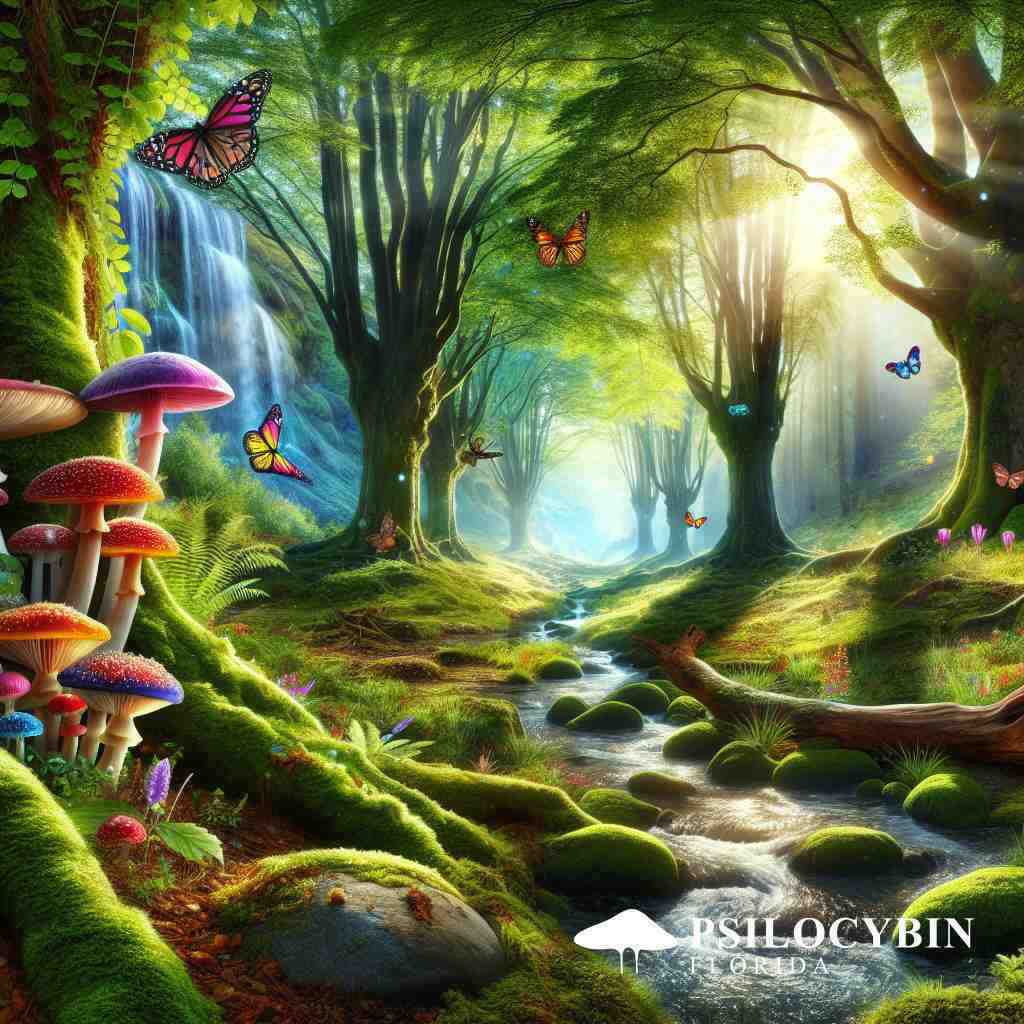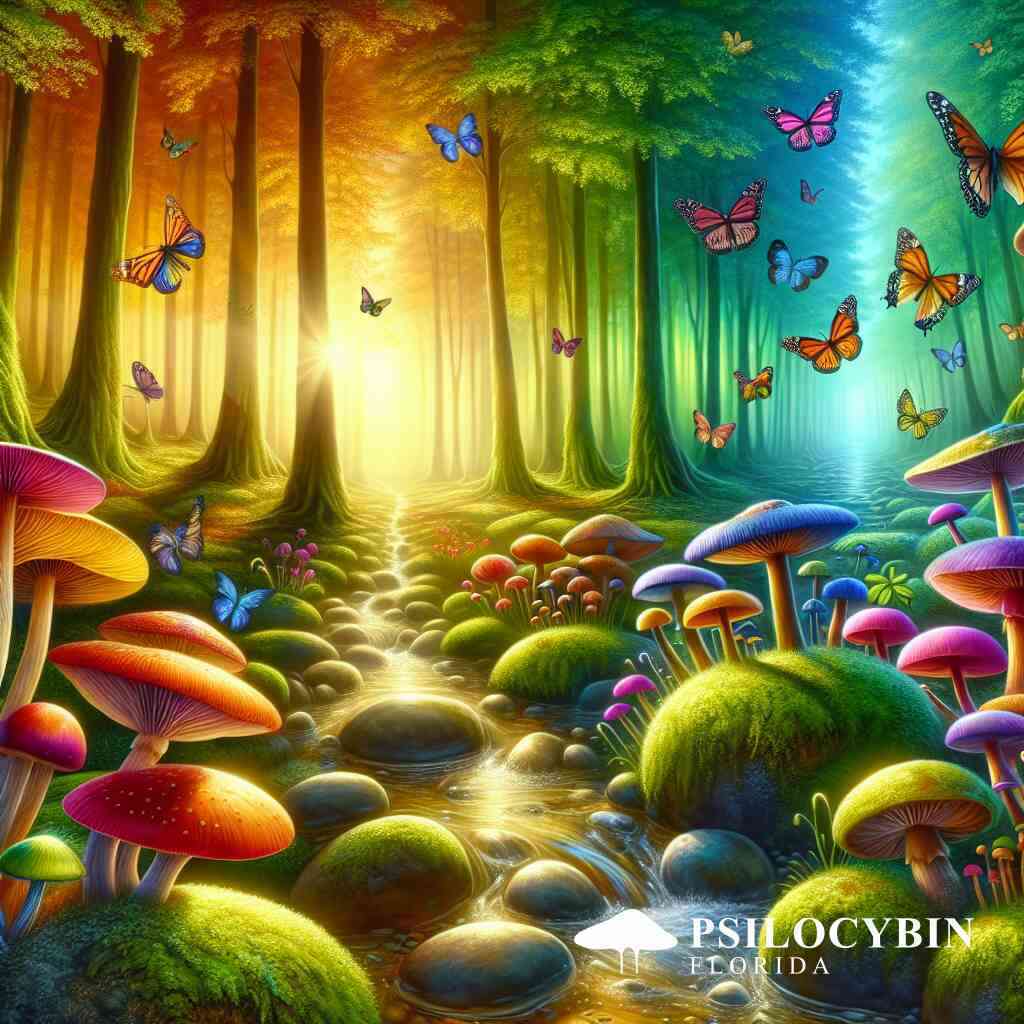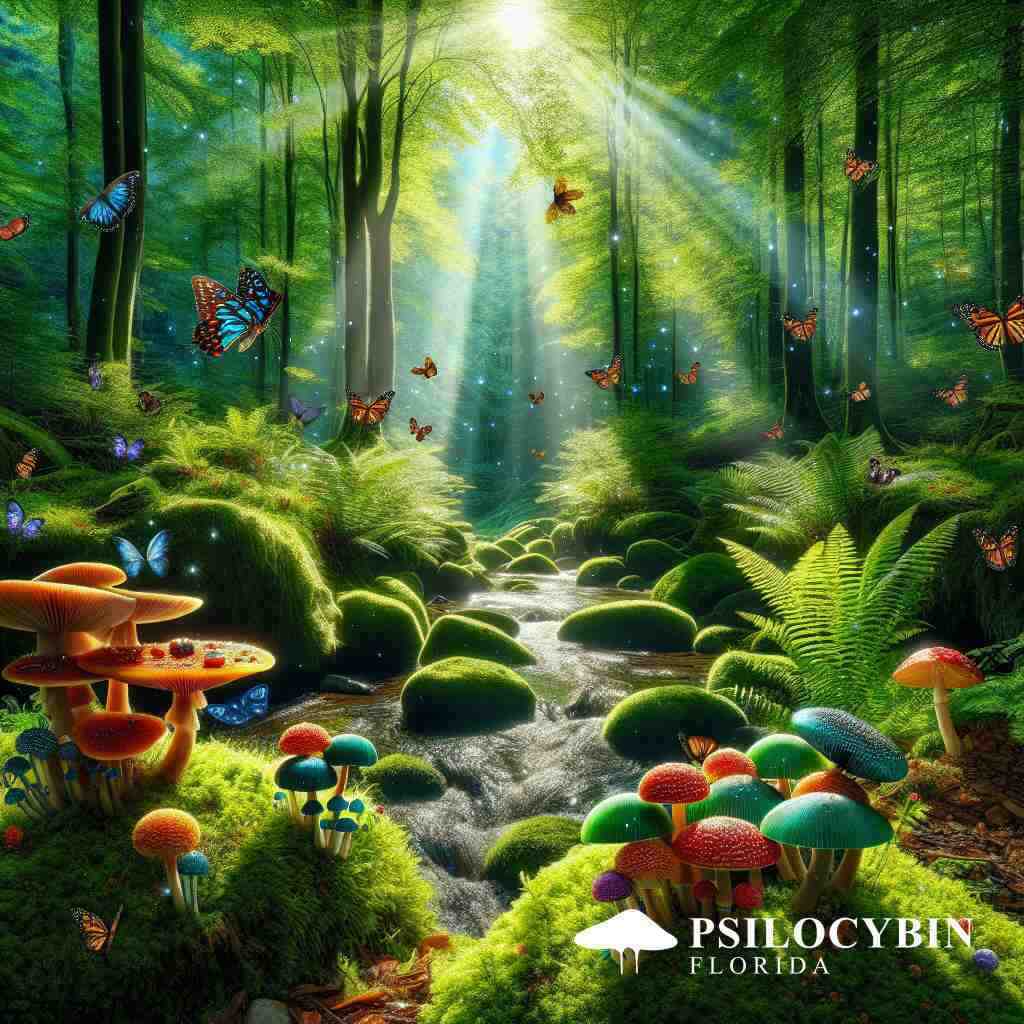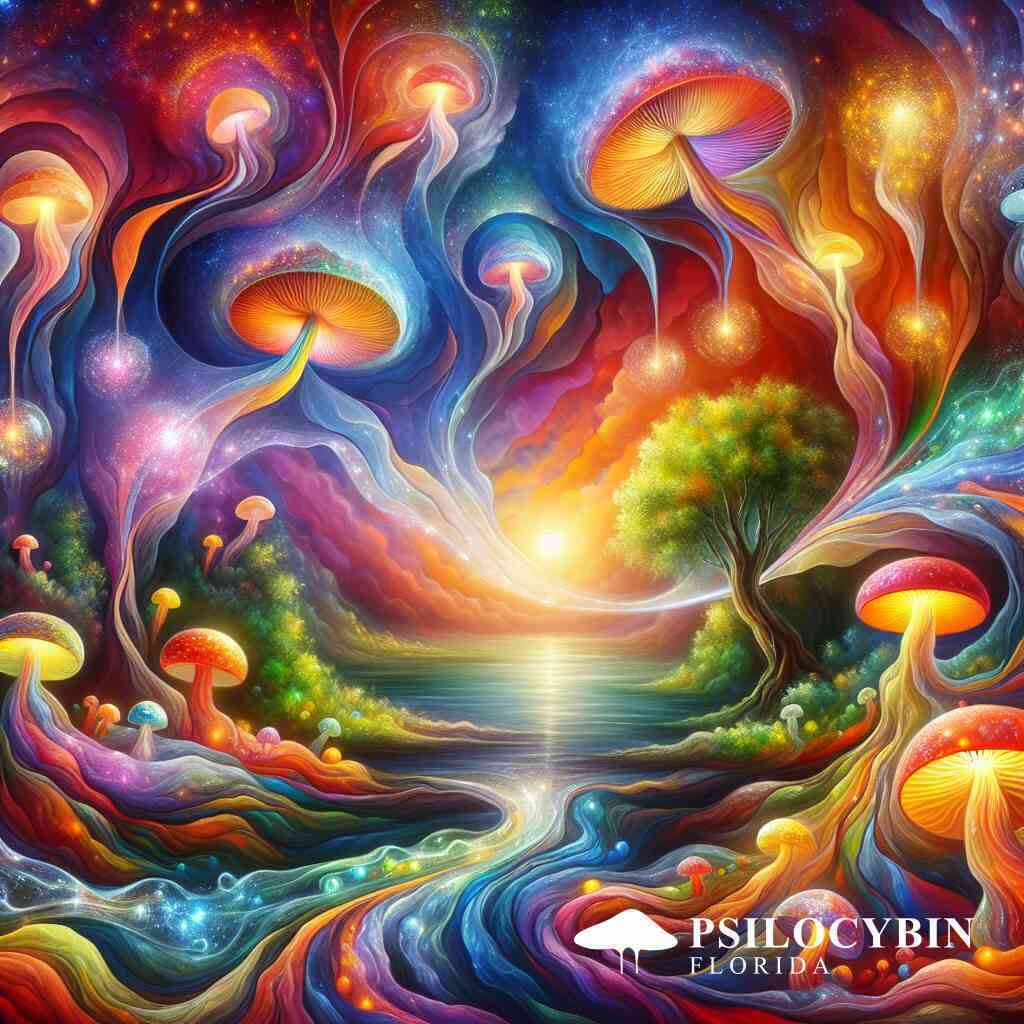
Discover Difference Between Psilocybin and Psilocin
Unlocking the Mystical World of Magic Mushrooms
A Brief History of Magic Mushroom Usage
Magic mushrooms, known for their psychoactive properties, have been used for centuries across various cultures. The indigenous tribes of Mesoamerica regarded these fungi as sacred, incorporating them into religious ceremonies and healing rituals. This rich history of usage highlights the significance of magic mushrooms in enhancing spiritual and mental states. Their historical journey from ancient civilizations to modern-day exploration showcases their enduring presence and evolving understanding. As society delves deeper into their potential, the knowledge of past uses paves the way for future scientific endeavors and therapeutic applications.
Cultural and Scientific Significance
Magic mushrooms hold notable cultural and scientific significance, acting as a bridge between mystical traditions and modern medicine. Culturally, they symbolize enlightenment and transformation, often referenced in myths and folklore around the world. Scientifically, these mushrooms are now at the forefront of research into mental health therapies. Active compounds like psilocybin are under exploration for their potential to treat various psychological conditions. This dual importance emphasizes the role of these naturally occurring substances in shaping both cultural narratives and scientific advancements.
Psilocybin Therapy in Florida: A Modern Approach
In Florida, psilocybin therapy represents a cutting-edge approach to mental health treatment. Utilizing the therapeutic properties of psilocybin, Psilocybin therapy in Florida aims to address conditions like depression, PTSD, and anxiety. This modern therapeutic method draws from the compound’s potential to induce profound emotional breakthroughs and lasting psychological benefits. With ongoing research and growing advocacy, Florida is becoming a hub for exploring the legal and clinical applications of psilocybin. As this field expands, the state continues to advance the integration of traditional healing practices with modern mental health strategies.
Chemical Alchemy: The Psilocybin to Psilocin Transformation
Unveiling the Psilocybin Chemical Structure
Delving into the molecular essence of psilocybin reveals a fascinating landscape of chemistry that drives its psychoactive effects. At its core, psilocybin is a naturally occurring psychedelic compound found in certain fungi, notably within the genus of Psilocybe mushrooms. Structurally, psilocybin is a tryptamine compound, which bears resemblance to the neurotransmitter serotonin, thus influencing mood and perception. This structural similarity plays a crucial role in its interaction with brain receptors. Understanding the psilocybin chemical structure unveils the compound’s ability to set the stage for a wide range of psychedelic experiences that can potentially transform mental states and perceptions.
The intricate composition of psilocybin involves a phosphorylated molecule, which is essentially the psilocybin itself before it undergoes conversion. This molecule remains inactive until it enters the human body and begins its conversion into psilocin. The design of psilocybin makes it a precursor striving for activation, leading to varying psychological and emotional effects once metabolized. Such structural nuances are central to the ongoing exploration of its therapeutic potential, offering insights into how these magic mushrooms facilitate profound changes in consciousness and mental health.
Psilocybin-Psilocin Conversion Process
The journey of psilocybin through the body is marked by a pivotal transformation into its active form, psilocin. Upon ingestion, the psilocybin undergoes dephosphorylation in the human digestive system, a process primarily occurring in the liver. This conversion process transforms psilocybin into psilocin, an active metabolite that directly influences the brain’s neurotransmitter systems. The psilocybin conversion process is integral in unlocking the full psychedelic potential of magic mushrooms, shifting the compound from an inert state to an activated form ready to interact with the nervous system.
During this conversion, psilocin is absorbed into the bloodstream and crosses the blood-brain barrier, where it exerts its psychoactive properties. This biochemical shift is essential, as psilocin predominantly interacts with serotonin receptors in the brain, particularly the 5-HT2A receptor. The efficiency and rate of this conversion can influence the onset and intensity of the psychedelic experience, highlighting the importance of understanding this process for both scientific research and therapeutic applications.
Psilocin: The Active Agent in the Psychedelic Journey
Psilocin, the active metabolite of psilocybin, is the driving force behind the psychoactive effects experienced during a magic mushroom journey. Unlike psilocybin, which serves as a prodrug, psilocin directly engages the brain’s neurotransmitter systems, altering perception, mood, and cognition. This interaction is primarily achieved through psilocin’s binding to serotonin receptors, mimicking the neurotransmitter’s effects and leading to an altered state of consciousness.
The role of psilocin in the psychedelic experience is characterized by its ability to induce visual and auditory hallucinations, synesthesia, and profound introspection. It catalyzes psychological exploration, offering users potential insights and emotional healing. This powerful compound is at the heart of contemporary research investigating the use of magic mushrooms for mental health treatments. Notably, Psilocybin for PTSD in Florida is exploring psilocin’s role in transforming trauma into therapeutic breakthroughs, showcasing its significant impact on managing psychological challenges.
Psychoactive Dynamics: Comparing the Effects on the Brain
Psilocybin’s Pharmacological Impact
Psilocybin, a prominent compound found in magic mushrooms, exerts its influence through a complex pharmacological profile. Its resemblance to the neurotransmitter serotonin allows it to bind effectively to the same receptor sites in the brain, particularly the 5-HT2A receptors. This interaction ignites a cascade of changes in brain activity, leading to altered perceptions and consciousness. The impacts are profound, as they can lead to a temporary dissolution of the ego, enhancing emotional introspection and personal insights. Understanding psilocybin’s pharmacology is critical as it lays the foundation for its therapeutic potential, especially in treating mental health conditions like depression, where increasing serotonin activity can have transformative effects.
The therapeutic journey with psilocybin varies based on individual brain chemistry and the context in which it is administered. Factors such as the dose, environment, and psychological state heavily influence the pharmacological outcome. These insights drive research and application strategies, ensuring that psilocybin therapy is both safe and effective in clinical settings. As our comprehension of its pharmacological impact deepens, the potential for breakthroughs in mental health treatment, such as Psilocybin treatments in Miami-Dade County, expands, offering hope to countless individuals managing complex psychological issues.
Psilocin Neurochemistry and Brain Receptors
Psilocin, the metabolically active form of psilocybin, engages brain chemistry through its direct interaction with serotonin receptors. Once converted from psilocybin, psilocin mimics serotonin, notably binding to 5-HT2A receptors, which are pivotal in regulating mood, cognition, and perception. This receptor binding is crucial to the compound’s ability to foster altered states of consciousness and heightened sensory experiences often described during psychedelic sessions. Psilocin’s neurochemical interaction facilitates a profound subjective experience that can lead users to explore deep-seated psychological themes and emotions.
The intricate neurochemistry of psilocin underscores its therapeutic potential in mental health contexts, highlighting its role in conditions such as anxiety and OCD. Its direct influence on serotonin pathways allows for the reorganization of neural networks, promoting neuroplasticity and emotional healing. By leveraging psilocin’s neurochemical properties, therapies like Psilocybin and OCD therapy aim to alleviate symptoms and foster positive psychological change, a testament to the potential of psychedelic medicine.
Diverging Pathways: Psilocybin and Psilocin Psychoactive Differences
While psilocybin and psilocin are closely related in the psychedelic journey, their effects exhibit subtle yet significant differences owing to their distinct physiological roles. Psilocybin acts primarily as a prodrug, influencing its psychoactive potential through subsequent conversion into psilocin within the human body. This conversion process is not just a chemical transformation but also a critical aspect of how these compounds differ in psychological and physiological effects.
Psilocin, the main active agent post-conversion, directly affects brain serotonin receptors, but the rate and efficiency of conversion from psilocybin can influence the intensity and onset of effects. Consequently, psilocin’s interaction results in a more immediate and direct alteration of perception and consciousness. This dynamic highlights the importance of understanding these pathways when considering therapeutic applications. The exploration of their psychoactive differences is crucial for tailoring Psilocybin treatments in Broward County to match individual patient needs, optimizing the benefits of magic mushroom therapy in a controlled and beneficial manner.

Harnessing the Healing Potential of Psilocybin and Psilocin
Psilocybin Therapy and Its Magic Mushrooms
Psilocybin therapy is at the forefront of innovative mental health treatments, using the properties of magic mushrooms to foster healing and transformation. Magic mushrooms, which thrive in diverse ecosystems, serve as the natural source for psilocybin, providing a gateway to profoundly transformative psychedelic experiences. In Palm Beach County, psilocybin therapy is gaining recognition as a revolutionary approach to mental health. This method leverages the compound’s ability to facilitate profound introspection and emotional release, offering newfound clarity and improved mental states for those struggling with debilitating psychological issues.
The healing potential of psilocybin in therapeutic settings is further underscored by its capacity to treat a wide range of conditions, from treatment-resistant depression to anxiety disorders. The journey typically involves structured, guided sessions where patients can safely explore their inner thoughts and emotions, potentially leading to lasting emotional and psychological relief. This reinterpretation of therapeutic care emphasizes a holistic view, blending ancient practices with modern scientific understanding to unlock new realms of mental wellness. Introducing Psilocybin Treatment Florida for Psilocybin Therapy
Psilocin’s Role in Emotional Healing
Psilocin, the active metabolite, plays a critical role in the emotional healing process by directly engaging brain chemistry to promote cognitive and emotional flexibility. Unlike traditional medications, psilocin fosters a state where neuroplasticity is enhanced, allowing for the reorganization of thought patterns and the release of suppressed emotions. The interaction of psilocin with brain receptors supports profound psychological shifts, aiding individuals in overcoming challenging mental health obstacles.
Therapeutic settings utilizing psilocin focus on creating environments conducive to healing, where patients can process complex emotions and gain insights into their psychological landscapes. This process is pivotal in addressing conditions such as PTSD, where psilocin’s ability to soften the emotional echoes of trauma can facilitate recovery and rejuvenation. By integrating psilocin into therapeutic frameworks, practitioners offer a more profound approach to mental health care, one that acknowledges the depths of the psyche and the potential for transformative healing.
Microdosing for Mental Wellness: Psilocybin and Psilocin Benefits
Microdosing with psilocybin and psilocin presents an alternative method for enhancing mental wellness, drawing interest from both scientific communities and the public. This practice involves taking sub-perceptual doses, which are believed to improve mood, creativity, and overall cognitive function without inducing full psychedelic effects. Microdosing is being explored as a novel approach for managing daily stress, anxiety, and other mood-related disorders.
In Florida, the insights gained from psilocybin microdosing emphasize its potential for integrating mental health benefits into everyday life. By adopting a regimen that includes minimal, regular consumption of psilocybin, individuals report improved focus, emotional balance, and enhanced mental clarity. Ultimate Guide to Psilocybin Microdosing in South Florida: This unconventional approach to mental health management supports the notion that even the most minor amounts of psychedelic compounds can have profound effects on one’s well-being, showcasing the versatility and potential of these natural substances in modern therapeutic landscapes.
Scientific Insights and Future Horizons
Current Psilocybin vs Psilocin Research
Recent studies are delving into the distinct roles of psilocybin and psilocin within therapeutic settings. Researchers focus on how these compounds differ in efficacy and application, shedding light on their unique contributions to mental health treatment. The conversion process from psilocybin to psilocin is a key area of investigation, revealing insights into how each compound modulates brain activity and emotional states. In Florida, Psilocybin’s impact on mental health is under rigorous examination, exploring how these psychedelic substances can be harnessed to alleviate symptoms of various psychological disorders. This growing body of research underscores the potential to refine therapeutic approaches, ensuring that both compounds are utilized to maximize patient outcomes.
The role of psilocin as the primary active metabolite has led to an increased focus on its direct physiological effects. Scientists are studying the neurotransmitter pathways engaged by psilocin better to understand its direct influence on mood and cognition. This detailed understanding is pivotal in developing precise methodologies for mental health therapies, paving the way for innovative treatments. By comparing these findings with existing psilocybin research, the scientific community is progressively unlocking the mysteries surrounding these potent compounds.
The Therapeutic Journey: Psilocybin and Psilocin
The therapeutic applications of psilocybin and psilocin are rapidly evolving, reflecting the dynamic nature of psychedelic medicine. These compounds, derived from magic mushrooms, are being integrated into mental health care strategies, offering new hope for patients resistant to conventional treatments. Their ability to foster profound psychological insights and emotional release positions them uniquely within therapeutic contexts. Such innovative approaches as Psilocybin for addiction recovery are exploring how these agents can facilitate significant lifestyle changes, aiding recovery processes.
Therapists and medical professionals are leveraging psilocybin’s ability to kindle introspective experiences, helping patients gain a deeper understanding of their struggles. Psilocin’s role as the active agent allows for immediate engagement with neural pathways, promoting neuroplasticity and emotional healing. This therapeutic journey is proving to be a cornerstone for individuals seeking alternative mental health solutions where conventional treatments have fallen short. Emphasizing personalized care, these therapies offer groundbreaking avenues for achieving emotional wellness.
Envisioning the Future of Psychedelic Medicines
The future of psychedelic medicines is poised for revolutionary advances as societal perceptions and legal landscapes shift towards embracing these substances. Research is expanding to explore how psilocybin and psilocin can be integrated into broader medical practices, transcending traditional limitations. As interest grows, the potential applications of these compounds in treating a wide range of mental health conditions become increasingly apparent. Innovations in psychedelic therapy are driving a new era of holistic healing, with Psilocybin therapy’s benefits showcasing its transformative impact on patients’ lives.
Further exploration of psilocybin and psilocin’s effects promises to unveil deeper insights into human consciousness and psychological resilience. Psilocybin Treatment Florida’s Role in Alcohol Recovery As these developments unfold, the role of magic mushrooms in clinical treatments will likely continue to evolve, redefining what is possible within mental health care. Collaborative efforts between researchers, healthcare providers, and policy-makers are essential to harness the full potential of these psychedelic compounds, ultimately shaping a future where they are integral to therapeutic landscapes worldwide.

Bringing Clarity to the Mystical Fusion
Integration of Differences for Holistic Healing
The integration of psilocybin and psilocin represents a groundbreaking approach to holistic healing. By understanding the nuances of these compounds, we can develop therapies that leverage each substance’s unique properties for comprehensive mental wellness. Psilocybin serves as a precursor, undergoing conversion to psilocin, which actively engages neurotransmitter systems in the brain. This alchemical transformation underscores a symbiotic relationship that enhances therapeutic outcomes. In Florida, this approach is translated into diverse therapeutic settings, where personalized interventions blend these two compounds harmoniously.
Utilizing both psilocybin and psilocin, therapies can target conditions in a multifaceted manner, addressing not only the symptoms but the underlying psychological landscapes. This dual strategy promotes emotional and cognitive flexibility, offering opportunities for individuals to rediscover mental equilibrium. The bridging of ancient wisdom with modern science through psilocybin therapy encompasses a holistic framework. The Ultimate Guide to Psilocybin Therapy in Florida This ensures patients receive comprehensive care that respects both the biological and emotional aspects of healing.
How Psilocybin Therapy is Revolutionizing Mental Health
Psilocybin therapy is heralding a new era in mental health treatment, capturing headlines and sparking interest globally. Its therapeutic potential lies in its ability to induce states of consciousness that facilitate profound personal insight and emotional release. Psilocybin allows individuals to explore their inner psyche in a structured environment, leading to transformative healing experiences. This revolutionary approach is substantiated by ongoing research exploring its efficacy for various conditions, including depression and anxiety disorders.
Incorporating psilocybin therapy into mental health care is reshaping conventional treatment paradigms. Highlighting its importance, innovations such as Psilocybin for migraine headaches demonstrate its versatile applications beyond traditional psychological disorders. As this field evolves, more healthcare systems in Florida and beyond are recognizing its value, firmly establishing psilocybin therapy within modern medical practices. This ushering of psychedelic medicine into mainstream healthcare heralds a promising future for mental wellness treatment.
Psilocybin and Psilocin: Agents of Transformation
At the heart of the psychedelic experience, psilocybin and psilocin are pivotal agents of transformation. These compounds, through their complex interactions with brain chemistry, facilitate journeys into altered states of consciousness, where users can access and heal deep-seated psychological burdens. As agents of transformation, psilocybin and psilocin promote neuroplasticity and personal growth, enabling profound shifts in perspectives and cognition. Exploring Top 5 Psilocybin Strains Fostering Growth
The transformative power of magic mushrooms springs from this dynamic duo’s ability to disrupt entrenched cognitive frameworks and foster new ways of thinking. By understanding the synergistic relationship between these compounds, therapeutic strategies can be tailored to maximize their healing potential. Florida’s exploration of Magic mushrooms in Florida exemplifies their pivotal role in modern medicine, highlighting the profound impact these natural substances can have on well-being. This transformative journey is a testament to the latent power within these compounds, waiting to be harnessed for personal and collective healing.
Frequently Asked Questions
Question: What is the primary difference between psilocybin and psilocin in the context of Psilocybin Florida’s therapies?
Answer: The primary difference between psilocybin and psilocin lies in their chemical roles and effects. Psilocybin acts as a prodrug, meaning it is the compound initially consumed and then converted into psilocin in the body. Psilocin is the active metabolite that directly influences brain activity by interacting with serotonin receptors. At Psilocybin Florida, our therapies harness these compounds’ unique properties to develop personalized treatment plans. By understanding their distinct roles, we effectively leverage psilocybin’s therapeutic potential for various mental health issues, ensuring that each patient receives the most beneficial care possible. Refer to How Psilocybin Florida Therapy Redefines PTSD Healing?
Question: How does the psilocybin-to-psilocin conversion process enhance the therapeutic potential of magic mushrooms used at Psilocybin Florida?
Answer: The conversion of psilocybin to psilocin is a crucial process that unleashes the full therapeutic potential of magic mushrooms. Upon ingestion, psilocybin undergoes dephosphorylation, converting into psilocin, which actively interacts with the brain’s neurotransmitter systems. This transformation is pivotal for eliciting the profound psychological and emotional effects experienced during therapy. At Psilocybin Florida, we emphasize this natural wonder of chemical alchemy, optimizing our therapies to ensure that patients benefit from both the immediate and enduring impacts of psilocin. This approach helps individuals experiencing conditions like PTSD, depression, and anxiety to achieve more profound emotional healing and personal insights.
Question: How does Psilocybin Florida integrate the differences between psilocybin and psilocin to offer holistic mental health solutions?
Answer: At Psilocybin Florida, we integrate the differences between psilocybin and psilocin to provide comprehensive mental health solutions. Check out Understanding Psilocybin Florida’s Therapy for Depression. By understanding their distinct physiological and psychological effects, our therapies are designed to tailor treatment approaches that maximize the benefits of both compounds. Psilocybin lays the groundwork for therapeutic effects through its conversion into psilocin, which then engages deeply with brain chemistry to promote neuroplasticity and emotional healing. This integration offers a balanced approach that respects both the biological and emotional pathways to recovery, providing patients with lasting mental wellness and personal growth.
Question: What insights can be drawn from the research comparing psilocybin vs psilocin in mental health treatments at Psilocybin Florida?
Answer: Research comparing psilocybin and psilocin highlights their unique contributions to mental health treatments, a focus at Psilocybin Florida. Psilocybin, primarily acting as a prodrug, sets the stage for its active form, psilocin, to influence neural pathways critically. Studies underscore psilocin’s direct impact on mood, cognition, and perception, revealing its central role in therapeutic outcomes. At Psilocybin Florida, these insights guide our practices, shaping therapies that maximize the individual effects of both compounds. By constantly engaging with current research, we remain at the forefront of psychedelic therapy advancements, ensuring our patients benefit from the latest scientific developments and innovative treatment strategies. See more on Psilocybin vs. Traditional Medications for OCD.
Question: In your blog post-Discover Difference Between Psilocybin and Psilocin, how does Psilocybin Florida utilize the information to improve mental health therapies?
Answer: In our blog Discover Difference Between Psilocybin and Psilocin, we delve into the distinct roles of these compounds to refine and enhance our mental health therapies. Psilocybin Florida uses this deep understanding to inform treatment protocols that cater to individual patient needs, optimizing the balance of psilocybin’s gradual effects with psilocin’s immediate psychological engagement. This comprehensive understanding allows for therapies that are not only scientifically grounded but are also compassionate and personalized, promoting overall mental wellness. By educating our audience on these differences, we aim to build trust and highlight the effectiveness of our innovative approaches to mental health care.


